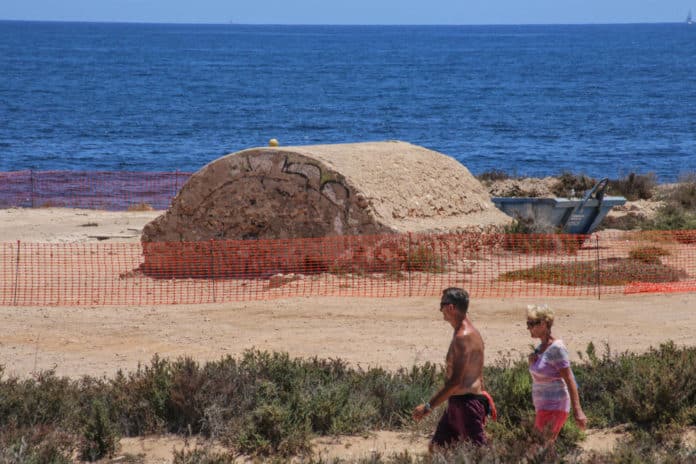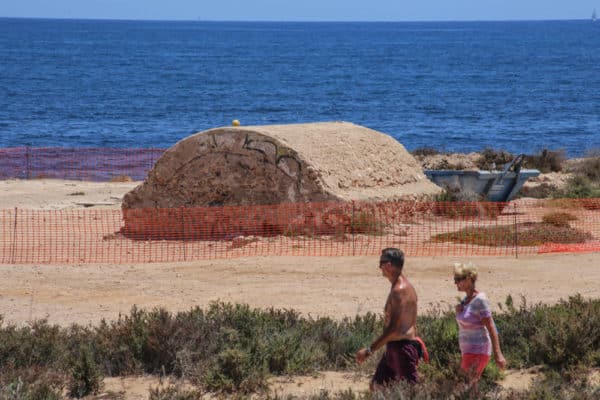As construction work continues, the Coastal Authority is demanding an update from the Torrevieja council on the situation regarding the archaeological remains of the 19th century police barracks and the air raid shelter dating from the Spanish Civil War, which are under the foundations of one of the five buildings that are currently being built, but whose license was authorised only on the condition of the creation of a suitable museum.
Four of the five towers, which will house 252 new apartments, are currently under construction. They are being built on the southern edge of Torrevieja, the last free coastal stretch of undeveloped land on the border with the Oriolano municipality.
The area, of about 20,000 square meters and with a 300-metre sea frontage, is a controversial urban project that began to be processed during the previous mandate, but that was halted in 2017 when it began to affect the old police barracks and the Civil War anti-aircraft shelter.
In 2018, the rubble was removed and the accesses were sealed to prevent the deterioration of the archaeological complex, although since then no further action has been taken on the remains that are still abandoned. In 2019 the building license was conditioned to include an archaeological study, as well as well as the protection and enhancement of the site to establish it as a museum.
Now that the site is under development, the council is being asked to send new documentation to Costas on the measures that will be taken to guarantee the security of the area.
Little is known about the role of the Punta Prima Antiaircraft Battery during the civil war although, faced with the repeated lighting of night lights by the local civilian population, the Commanding Officer of the Punta Prima anti-aircraft batteries sent a letter to the mayor instructing the local authority to warn it’s residents to refrain from lighting lights, some of which could be seen from the sea, since they could give away the whereabouts of the battery to an enemy ship.
Information about both the police barracks and the anti-aircraft have been published in the magazine “History and cultural heritage notebooks of Bajo Segura”, published by Artistic Historical Patronage of the city of Orihuela. The article outlines details of the historical complex, uncommon in a municipality that is now depleted by construction, and which goes unnoticed by the many people who frequent the area for walking, cycling or jogging, but which deserves to be better respected by the local population.






